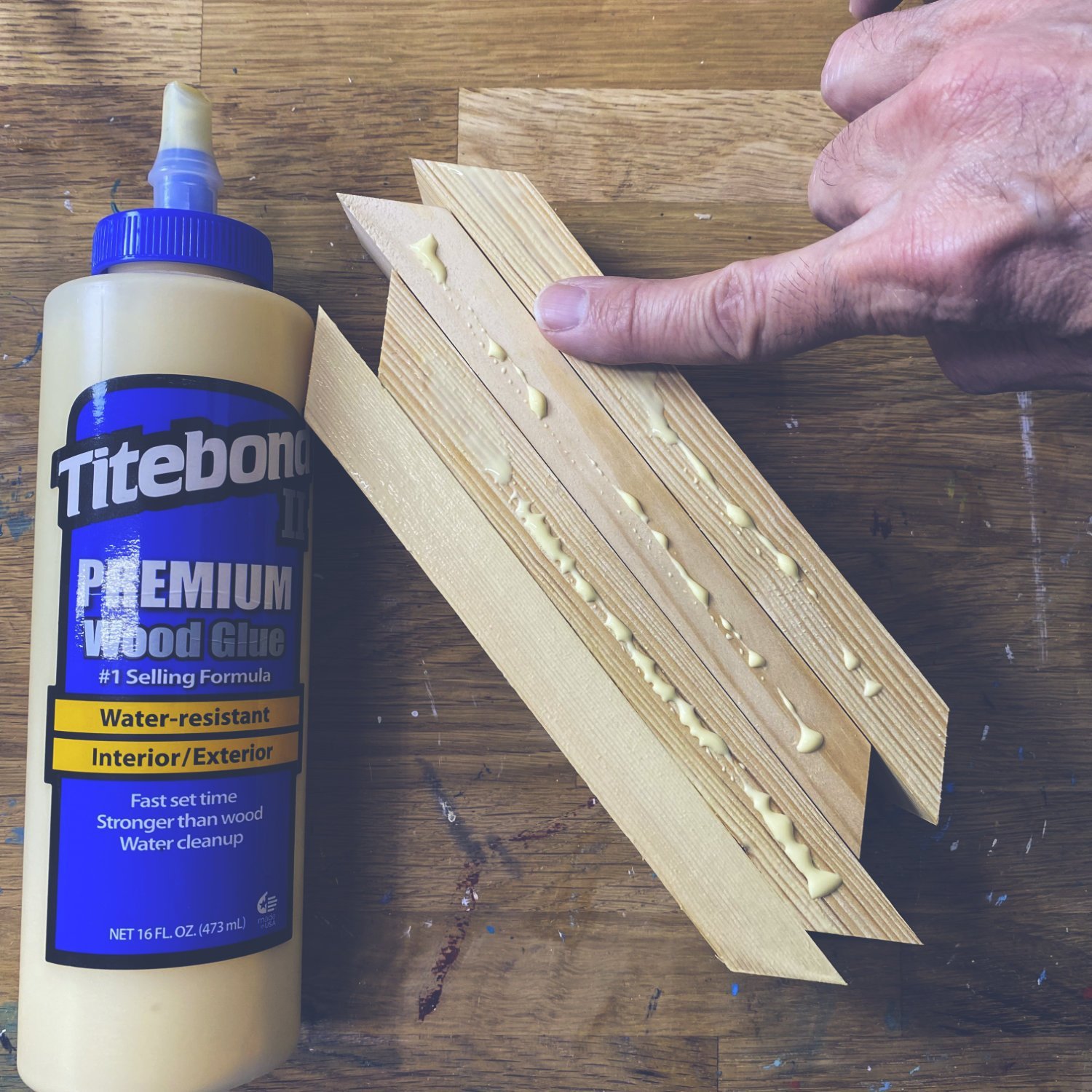a comprehensive guide for painting on aluminum
Here in our studio we’ve painted on all of the traditional painting supports but have come to love and prefer aluminum as a painting surface. Why paint on aluminum and how should the surface be prepared? Let’s answer those questions and consider other relevant information about aluminum as a painting support.
Let’s first clarify what we mean when talking about aluminum as a surface for painting. We use aluminum composite material, or ACM. This material is composed of two thin sheets of aluminum bonded to a polyethylene core. It is commonly used in the sign industry as well as certain types of construction. Many types of ACM come with a polyester coating on one or both sides. White is the most common color and some panels have a brushed aluminum side. We always buy 3mm ACM that has a white coating on both sides (it is available in other thicknesses and colors). The coating serves as something of a primer and painting on raw aluminum isn’t recommended.
Why ACM panels?
Aluminum Composite Material is an excellent, stable surface to paint on. It is less prone to moisture and insect damage than other common supports like canvas or wood. It is relatively light weight and is available in sheets up to 5’ x 10’.
How to Prepare the Surface
Surface prep is simple and straightforward.
Step One
Peel off the protective plastic coating if your ACM has one. The protective plastic is not to be confused with the polyester coating, which can’t be peeled off. The protective plastic coating is usually printed with the brand of ACM, like Dibond or Metal-Max.
Step Two
Lightly sand the surface, taking care not to sand through the polyester coating to reveal the bare aluminum. We generally use a medium grit sanding sponge or 150-220 grit sandpaper and a light touch. The goal is to scratch the surface up to allow the primer layer to have better adhesion.
Don’t skip the next step!
Step Three (Important)
Wipe the surface clean with isopropyl alcohol. This step removes any dust from sanding as well as any oils or other residue that could prevent proper adhesion of primer or paint.
Step 4
Prime the surface using your preferred gesso. We like Golden products. What you use to apply your gesso depends on the surface you prefer. If you want a textured or rough surface use a nap roller or a stiff brush. For a smoother surface with a fine tooth use a foam roller. At least three layers of gesso is recommended.
Photorealism painters often prefer a very smooth surface to paint on. We have found that the smoothest surface is achieved by spraying the gesso using an airless or HVLP spray gun. We thin the gesso with 25% water and then strain it to remove any larger particles. While we have gotten good results with Golden Gesso take note that Golden Sandable Hard Gesso does not work with a spray gun.
How To Cradle Aluminum Panels
Like many artists, we prefer to work on panels that are cradled, having a wood support frame on the back. We attach wood frames to the back of our aluminum panels using a construction adhesive or 3M VHB tape.
No matter what adhesive you use it is important to sand around the edges where the wood will attach to the panel. Be sure to wipe with isopropyl alcohol after sanding.
3M VHB tape is an easy and clean way to attach wood to aluminum panels but it does require some special treatment. We use the RP+080 tape, but the 5952 tape can work as well. Before adhering the tape to the wood we seal the edge of the wood with a thin coat of wood glue and then lightly sand it when dry (sealing the wood is an important step when using VHB tape). After this we press the wood to the tape that is adhered around the edges of our panel. VHB tape will form a permanent and durable bond.
Continue pressing the wood into the tape on each edge of the panel. Applying wood glue to the corners as you attach each piece will strengthen the cradle. Once finished the tape will reach its maximum bond in 72 hours.
Sourcing and cutting ACM panels
ACM panels can be purchased at some art suppliers as well as at sign supply stores. We get ours at a local sign supply shop and buy the panels in 4’ x 8’ sheets. The shop will cut it to the sizes we need for a small fee. We also cut our own panels using a table saw. However, power tools are not necessary for cutting. ACM panels can be cut using a heavy duty utility knife.
Make multiple cuts using a ruler as a guide. After several cuts the ACM panel can be snapped along the cut line.
Is it necessary to prime ACM panels before painting on them?
While we prefer the surface of a panel primed with gesso, we have tested painting on ACM panel without priming it. The panel we used had a white coating on it from the factory. We did prepare the surface by lightly sanding it and wiping it with isopropyl alcohol. The surface is very slick and felt a bit like painting on glass.
This sketch with oil paints was done in 2018 on an unprimed ACM panel. After 5 years (as of this blog post) there appear to be no issues with the paint adhering to the surface. The paint remains intact even when scratched with fingernails.
If you have any other questions about using ACM panels let us know in the comments or send us a message through our Contact page.
Happy Painting!

















